Soapy Trees? Sometimes Trees Need a Shower
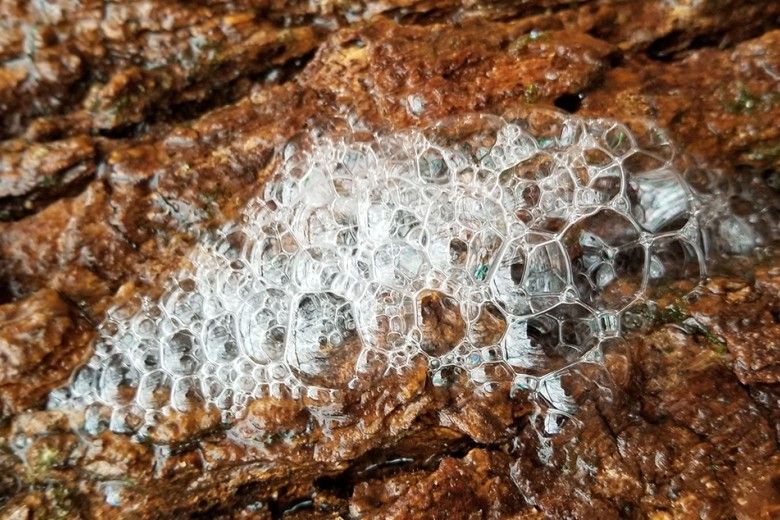
If you ever go for a walk in the woods during—or soon after—an extended rainfall, you might find an interesting spectacle: Numerous trees foaming at the base! Although an odd sight to behold, it is actually a visual representation of a process called stemflow. Stemflow is the act of water flowing over the exterior of a plant’s trunk or stem.
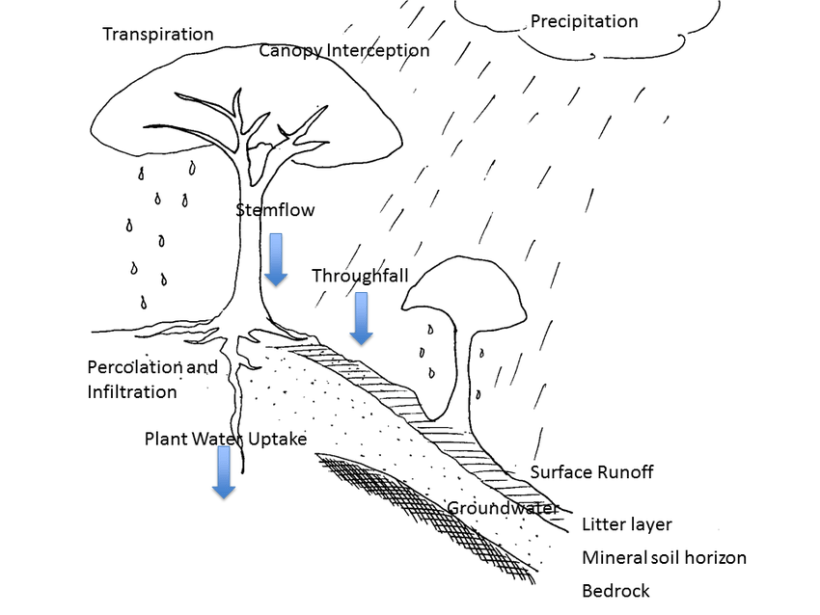
This process represents a fraction of the intercepted precipitation directly striking the trunk or converging as branch flow onto the trunk. Although stemflow is often less than 2% of the gross rainfall, it almost always funnels more water per unit area to the base of the stem than either rainfall or throughfall alone. This also means that any nutrients or pollutants in this concomitant solution are also funneled into the root system (Tucker, 2020).
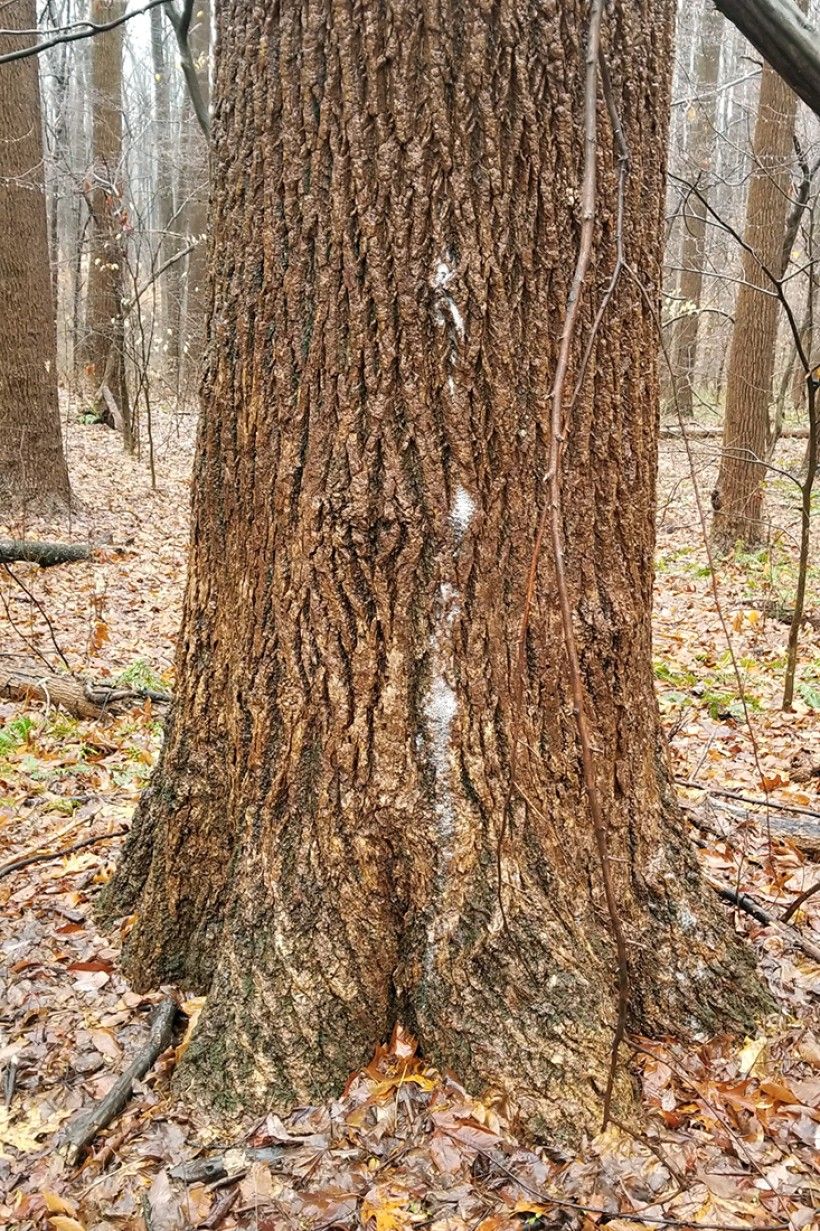
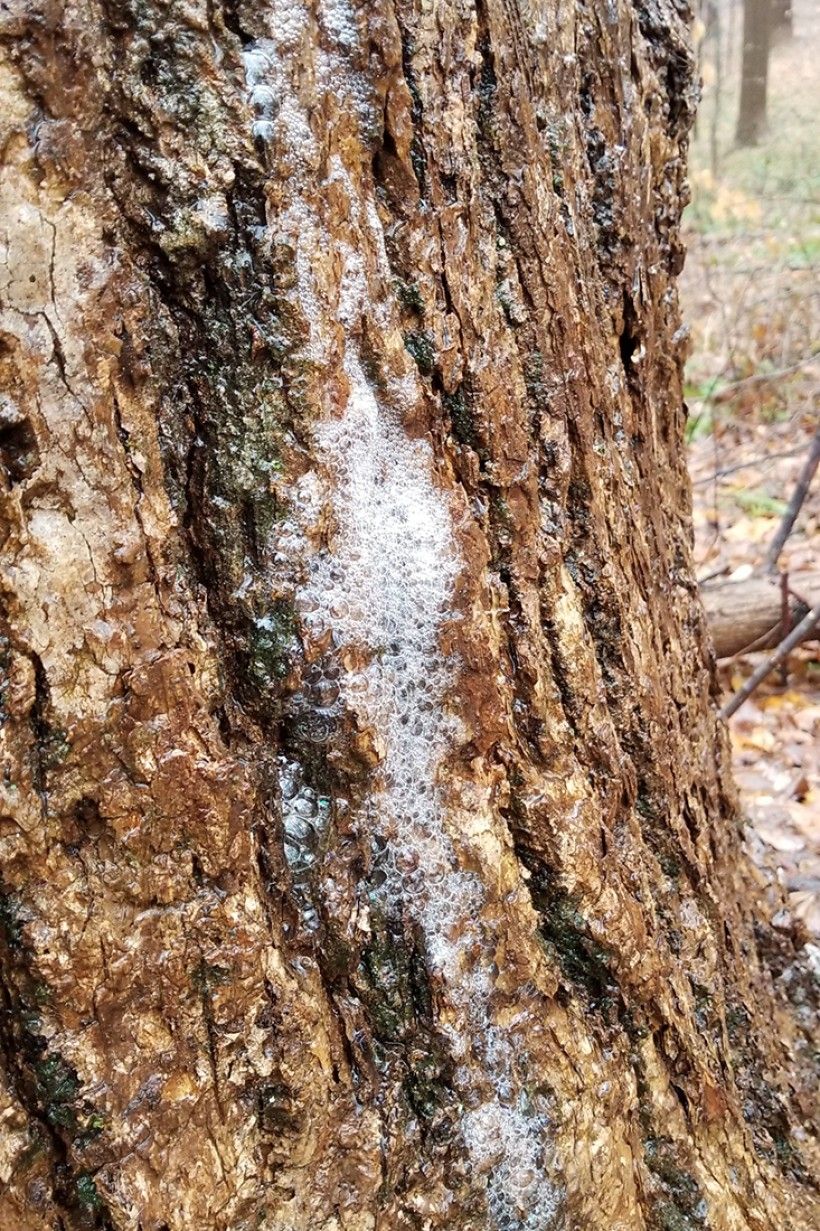
But why are the trees foaming? During dry periods, an assortment of particulates, plant chemicals, and air pollutants accumulate on the bark surface of trees. When rain collects on a tree’s canopy, these ingredients mix and concentrate towards the base of the tree. The foam is a result of a crude soap, flowing and bubbling due to turbulence on tree bark furrows. Soap is basically a combination of an alkali metal, such as sodium or potassium, and a mixture of carboxylic acids.
The best time to see this process occur is after several weeks without rain and during extended rainfall periods of a few days. The best trees to find this “tree soap” on would be larger diameter ones with plenty of deep bark ridges—which creates a large surface area for the accumulation of the soap ingredients. Trees like tulip poplar, oak and hickory would be best—as seen here from the Brandywine’s Laurels Preserve—while smooth bark trees like sycamore and beech would rinse off the soap without creating bubbles.
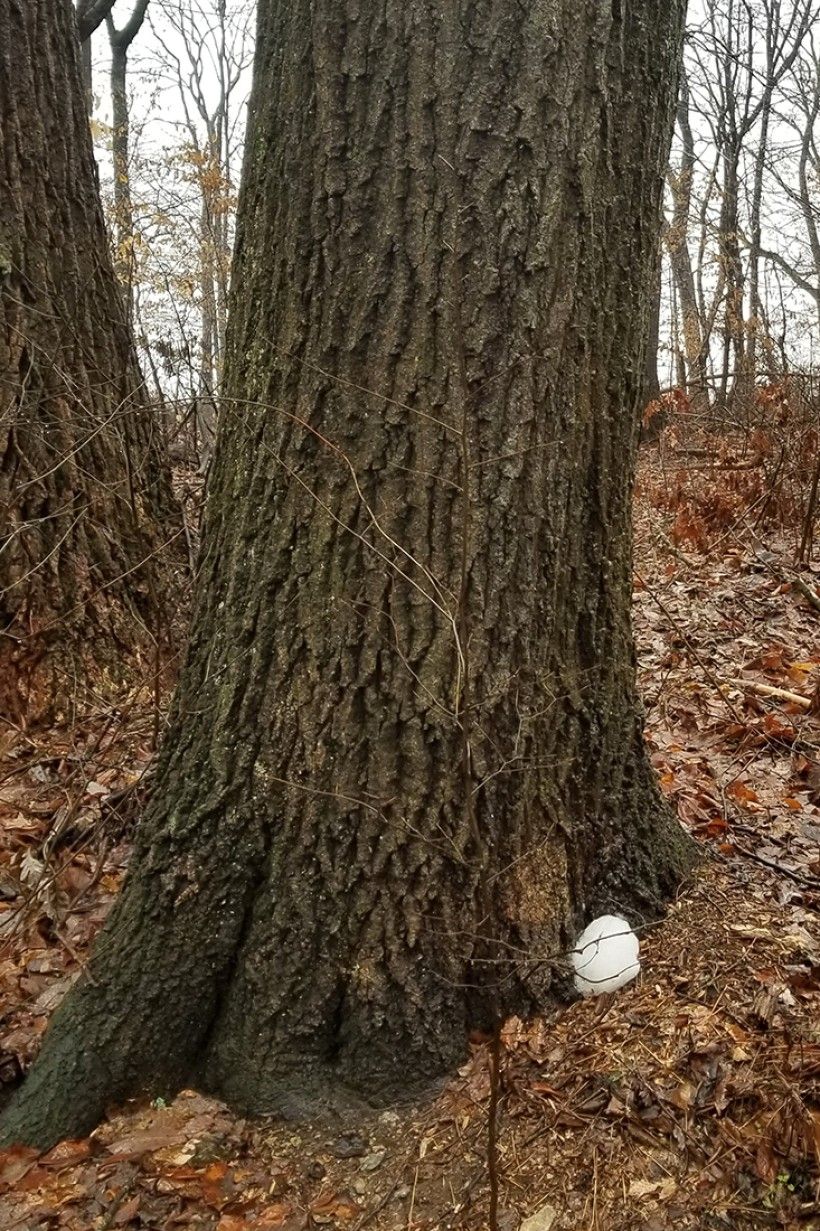
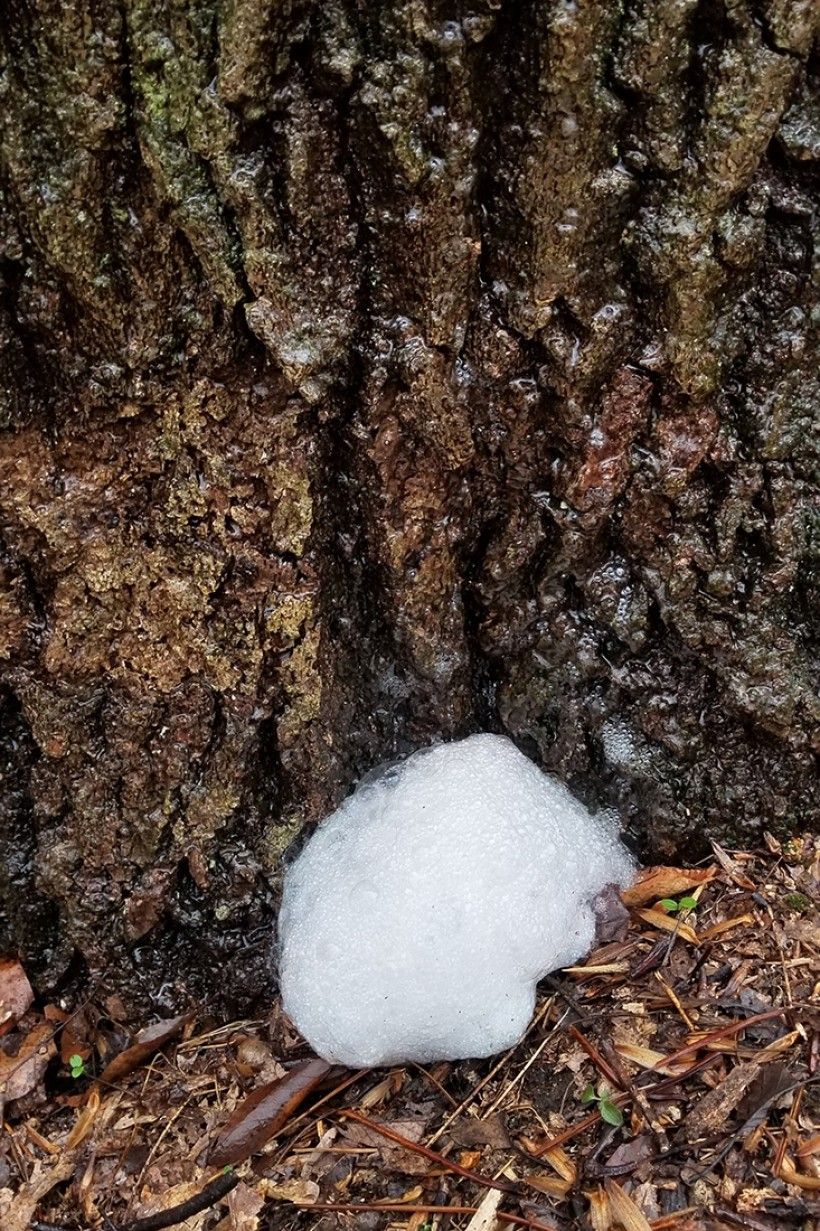
References
- Tucker, Amy, et al. “A Network Model for Stemflow Solute Transport.” Applied Mathematical Modelling, Elsevier, 2 July 2020, https://www.sciencedirect.com/science/article/abs/pii/S0307904X2030322X.
- Erik Draper. “Why Are My Trees Blowing Bubbles?” BYGL, https://bygl.osu.edu/node/1595.
- Saha, Amartya & Setegn, Shimelis. (2015). Ecohydrology: Understanding and Maintaining Ecosystem Services for IWRM. 10.1007/978-3-319-12194-9_8.
All photos by Clint Mautz